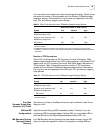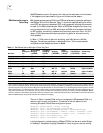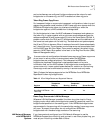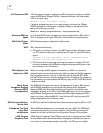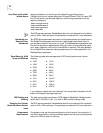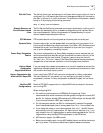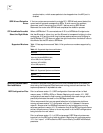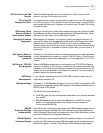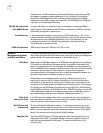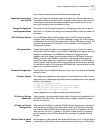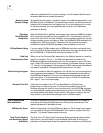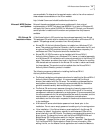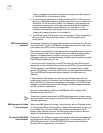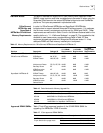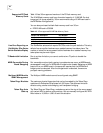
Routing Protocols and Services Notes 57
CPU Utilization with XNS
Protocol
When the PathBuilder S5xx switch is configured for 2048 tunnels and XNS
protocol, very high CPU utilization will occur.
IPX to Non-IPX
Configuration Error
A mechanism does not exist to prevent adding a path from a non-IPX routing port
to an IPX routing port. If this situation occurs, the router stops routing IPX traffic,
even though the primary port has been up the whole time. To restart IPX routing,
re-enable the port.
IPX Routing, Route
Receive and Route
Advertisement Policies
When you route IPX over a Frame Relay meshed topology and configure the SAP
Route Receive and Route Advertisement policies on the Frame Relay port, these
policies do not take effect until the SAP table is flushed.
Managing IP Address
Assignment
When assigning IP address to virtual ports of directly connected networks, it is
important to ensure that the assigned address is valid. As LCP supports multiple
Network Control Protocols (NCPs), IP does not verify that the address is valid
before bringing the port state up or down, as there may be other protocols which
are utilizing that port. It is possible to have an UP port state, yet have a lack of IP
connectivity.
NAT Service - Many to
One Outbound
Translation
NAT Many to One Outbound does not translate properly when multiple addresses,
on LHS, are specified using comma (,) notation. But NAT Many to One Outbound
translates properly when multiple addresses, on LHS, are specified in 10.3.1.0/24
notation.
NAT Service - TCP/UDP
Port Mappings
When the NETBuilder bridge/router is configured to use TCP/UDP Port Mapping
from port 23 (Telnet) to any other port number, the first command executed over
the session will fail due to extra characters inserted into the command string. All
subsequent commands issued for that session will succeed. If you encounter this
problem, execute the command again.
OSPF Route
Advertisement
If your network is expecting more than 4000 OSPF routes you need to set the
ospfholdtime variable to 30.
PIM-Sparse Mode In Release 11.4, PIM-SparseMode does not look into the BGP routing table for RPF
(reverse path forwarding) lookups. RPF lookups for IP addresses reachable only via
BGP will result in RPF failures.
This has the following implications.
■ A PIM-SM router will drop multicast data packets sent from a source reachable
only via BGP.
■ PIM-SM Rendezvous Points which are reachable only via BGP will not get
added to the local RendezvousPoint set (the set of routers capable of
functioning as PIM-SM RPs).
PIM-SM
Enterprise OS/Cisco
Incompatibility
Cisco IOS currently forwards the boot strap router (BSR) message packets without
modifying the source IP address field. This implementation is incompatible with
3Com Enterprise OS and there is no workaround when a PIM-SM domain contains
both Cisco IOS and 3Com Enterprise OS devices.
PIM-SM Register
Checksum Formats
Cisco IOS currently sends register packets with register checksum on the entire IP
payload, and IOS rendezvous points (RPs) also expect register checksums done on
the entire IP payload. However, 3Com Enterprise OS devices generate register



